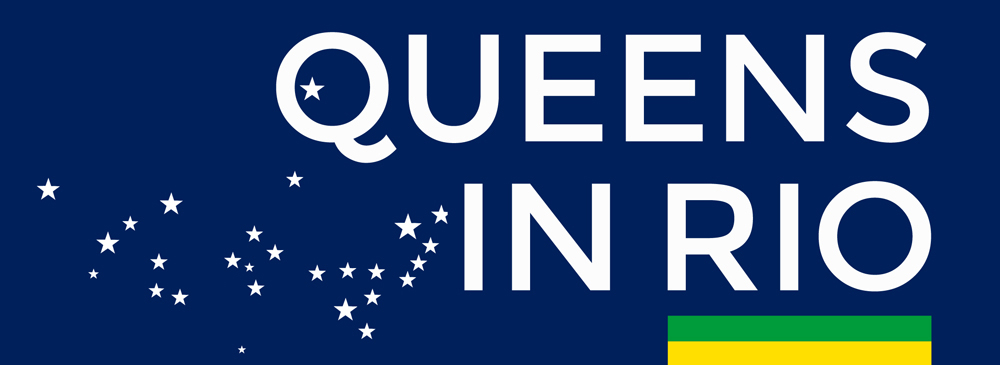
Imagine three blond American girls walking into a television studio for the Brazilian version of Oprah. Imagine the looks, stares, and situations they would experience. That was us.
All we knew was that there was a chance to be behind the scenes during production of Encontro con Fátima Bernardes on Globo, the largest television network in Brazil. As communication students, we wanted to explore the opportunity.
Globo picked us up in a van at 5:45 a.m. on Monday morning, Aug. 8, then picked up another three students from Ball State University, and drove us 90 minutes to the television studios outside of Rio de Janeiro. At 7:30 a.m. we walked into the studio, foreign in more ways than one. The language, atmosphere, props, and context were like nothing we had ever seen. The looks we got were somewhere between accepting and alienating.
During a pre-show briefing, a tour-guide-semi-producer kind of person gave us a lot of hand gestures that I understood to mean “stand up, sit down, and applaud.” I didn’t understand his vocabulary, until he yelled “AMERICANS…. ONDE AMERICANS?” All three of us looked at each other and simply waved because we didn’t know what else to do. We knew that we couldn’t sit there like statues. Immediately after our pathetic hand wave, laughs overwhelmed the room. We felt a little suffocated. Were they laughing with us or at us? Foreigners out of the loop and a little anxious, we looked at each other and laughed like nothing was going on. Surprisingly, after that, we fit right in.
A lot of security and rules followed. Network guards shepherded us to the studio for Encontro. Videographers scurried and screamed at each other, while I, wide-eyed and excited with curiosity, waited to see what would happen next. When the show started all I could think about was how stupid and similar talk shows really are, all over the world. I mean, Fátima Bernardes, the host, could not possibly have been interested in the person who carved fruit. All that was different was the language. Because Portuguese is close to Spanish I was able to translate a little bit throughout the show, but the three of us got the drift because of the oddly familiar and insipid movements and videos they played throughout.
Perspective is what caught my eye the most. I didn’t realize until this experience how many details can vary the tone of the show. So many cameras surround the set that anything can be changed in a split second. I saw first-hand what I cannot see when I’m watching television. Videographers and people behind the videographers holding their power cords used aggressive, angry, and sometimes sweet hand gestures that could change behavior and action in the room.
After the show, I realized that the moment things changed was when we three foreign blond-haired Americans laughed at ourselves, in front of Brazilian producers and families and children. This changed the tone for everyone in the room, gave us permission to embrace the culture, and moved us closer to the people around us.
You can watch the entire Aug. 8, 2016, episode of Encontro con Fátima Bernardes.
From left in photo above: Ashley Osiecki, Kelsey McCormick, and Alex Bruder of Queens University of Charlotte. Fátima Bernardes is in the green blouse in front. In the red shirt is Daniel Amgarten of Campus Brasil, and in the gray shirt at far right is Mackenzie Presbyterian University student Luis Ottoni, a field producer and translator for Queens in Rio.


Welcome to Brazil, my son is Brazilian student from Queens, he is a swimmer’s team National Champion Queens, his name is Felipe Oliveira.
Good job Al!
Have a great time — all three of you.
The Wollams
Good job Al!
Have a great time — all three of you.
The Wollams